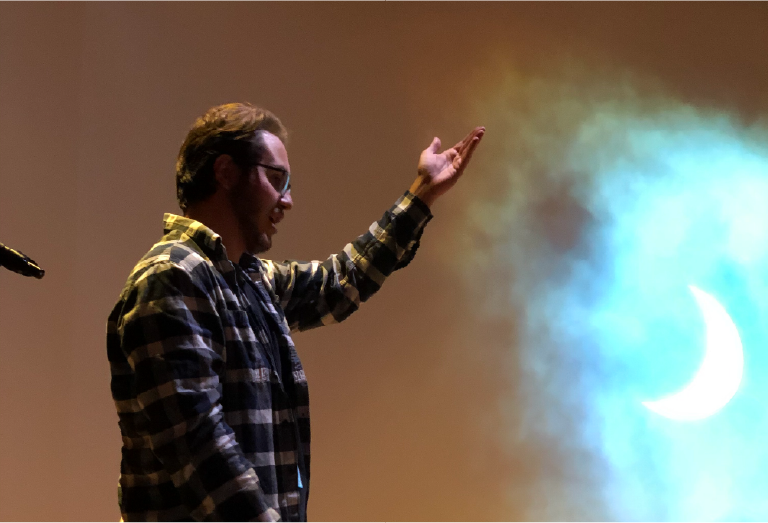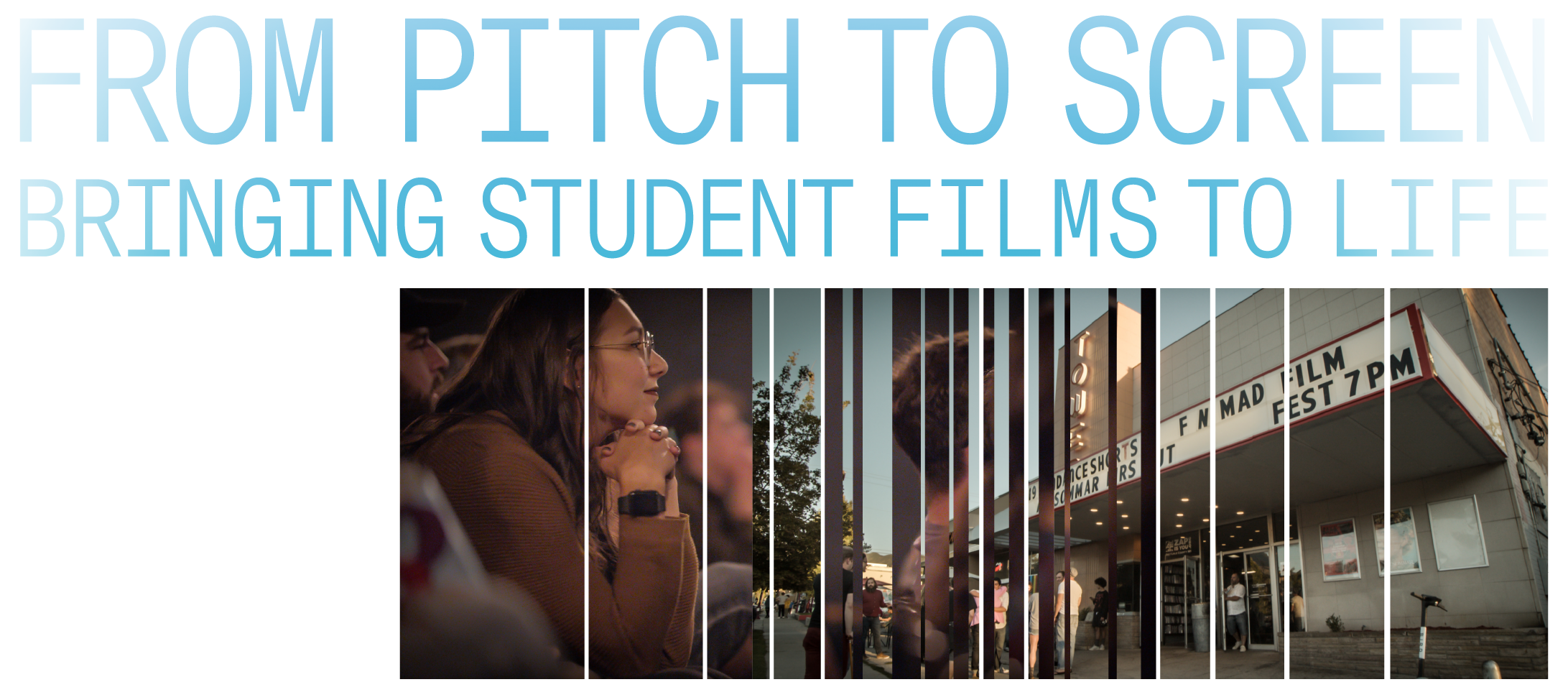(Photo: TWIG Media Lab)
WRITTEN BY MOLLY POWERS
On a fall evening in Salt Lake City, University of Utah Department of Film & Media Arts alumna Summer Florence sat near the back of the Tower Theatre as her short film, “Salty Plastic,” played on screen. Showing her work in front of an audience felt “surreal,” she said, “like a dream come true.”
“There’s a scene near the end of my film that has an insert shot of a letter, which is tilted to the right,” she recalled. “I’ll never forget seeing the entire audience’s heads tilt simultaneously to read that letter. It’s a funny anecdote, but it really was amazing to witness. I felt such a sense of community and support in that moment.”
Florence took home the Audience Award for Best Undergraduate Film for “Salty Plastic” at the 2019 Film Spring Showcase and at the F&MAD Film Festival that same year, and the short has gone on to collect yet another Audience Award at the Indies and IPAs Festival in Cedar City. Like many of her peers, Florence loves the palpable sense of community that comes from the festival experiences that the Department of Film & Media Arts hosts.
“Community is definitely the key word to a theatre setting,” said Bethany Joy Burr, Film MFA graduate student and winner of the 2019 F&MAD Fest Graduate Audience Award for her film, “TUBcake.” “There is something inherently collaborative about filmmaking — in the process and the product.”
In other words, films are meant to be shared.
Film Students at the U are not only exposed to world-class instruction from a gifted and creatively diverse group of faculty members, but they are also encouraged to experience the perils and triumphs of sharing their work publicly, whether it’s the first glimmer of an idea or the big reveal of a project months in the making.

Mason Henrie pitches his film project “Luna and Estelle” during the Second Edition of the Film and Media Arts Department’s Film Pitch Competition in fall 2019. (Photo: Also Sisters)
The Department of Film & Media Arts presents two public screening events a year, the F&MAD Film Festival and the Spring Showcase, in addition to the newly instituted Pitch Competition, a public event where students pitch project ideas to a panel of judges.
The aim is to simulate real-world festival experiences during both screening events, give students a concrete sense of how their films look and sound in a theatre, and lend them the confidence to know that they can successfully navigate the real thing later. Like most big festivals, students submit their films through the Film Freeway platform, requiring them to create filmmaker biographies and artist statements. Then comes the excruciating wait to see if their project is selected, news that arrives with written feedback from the judges about each submission.
The F&MAD Festival is hosted at the charming Tower Theatre in SLC’s 9th and 9th district every fall, while the Showcase is held on campus. Both events pull out all the stops to create a festival atmosphere, complete with filmmaker badges and awards ceremonies with certificates and trophies. Showcase filmmakers are encouraged to interact with the audience, learn how to navigate a Q&A session, and network with film professionals — soft skills that will be invaluable after graduation.
Miriam and Sonia Albert-Sobrino, Assistant Professors and independent filmmakers, and also sisters (who often go by the name the Also Sisters), challenge their students to scrutinize their projects from the very earliest stages. They introduced the Pitch Competition in 2018 as part of their Producing and Directing class, and the event is now an annual trial-by-fire for budding filmmakers.
“We put the competition together because as filmmakers we are constantly pitching,” Sonia explained. “That’s part of the process. In order to get someone to back your project and produce it, you must know how to pitch it well.”


Student audience at the Department of Film & Media Arts’ F&MAD Film Festival at the Tower Theatre. (Photo: TWIG Media Lab)
During the competition, student filmmakers work through how to answer challenging questions about their creative decisions, and learn to craft an “elevator pitch” – a quick go-to description that eloquently communicates their film’s theme, message, or genre. All this while being judged by panel of professionals, who give honest, sometimes tough, feedback. Adding to the pressure, students are recorded during their pitch, so that the upcoming cohort can dissect their performance to learn from it, too. The aim of the entire event, Miriam and Sonia say, is to create an environment for students to learn from mistakes and improve.
Film & Media Arts alumna Sage Bennett remembers pitching her concept for her short film, “The End,” as both nerve-wracking and exciting.
“It’s vulnerable sharing your ideas, and especially vulnerable in front of a crowd,” she said. “I felt that the Pitch Competition was just enough beyond my comfort zone, but not too far out of it — the perfect place for growth.”
Bennett ended up winning the Grand Jury Award for her pitch, and was awarded a stipend to help bring “The End” to life. In the next five months, she moved from writing, to pre-production, filming, and post production, and eventually screened the film at the Spring Showcase and then the 2019 F&MAD Fest. “The End” went on to win awards outside the University, picking up the Utah Student Short Film of the Year Award at Fear No Film Festival, and so far has been screened at the Los Angeles Lift-Off Film Festival 2019, and BLOW-UP the International Arthouse FILM FEST in Chicago.
Now, Bennett works as a commercial director at Namesake Content, a production company based in Salt Lake, and for Boogie Nights, a company based in Paris. She says her experience at the U helped prepare her for her current work.
“There are lots of situations I am in now, whether it is a phone call or a moment where someone asks me what I am up to, where I have to pitch an idea. The competition prepared me for those moments.”
And the screening opportunities?
“Priceless,” she said. “It’s so gratifying to watch an audience experience your work. Seeing it on the big screen, makes you realize that it could be on other big screens, with even bigger audiences.” ■













